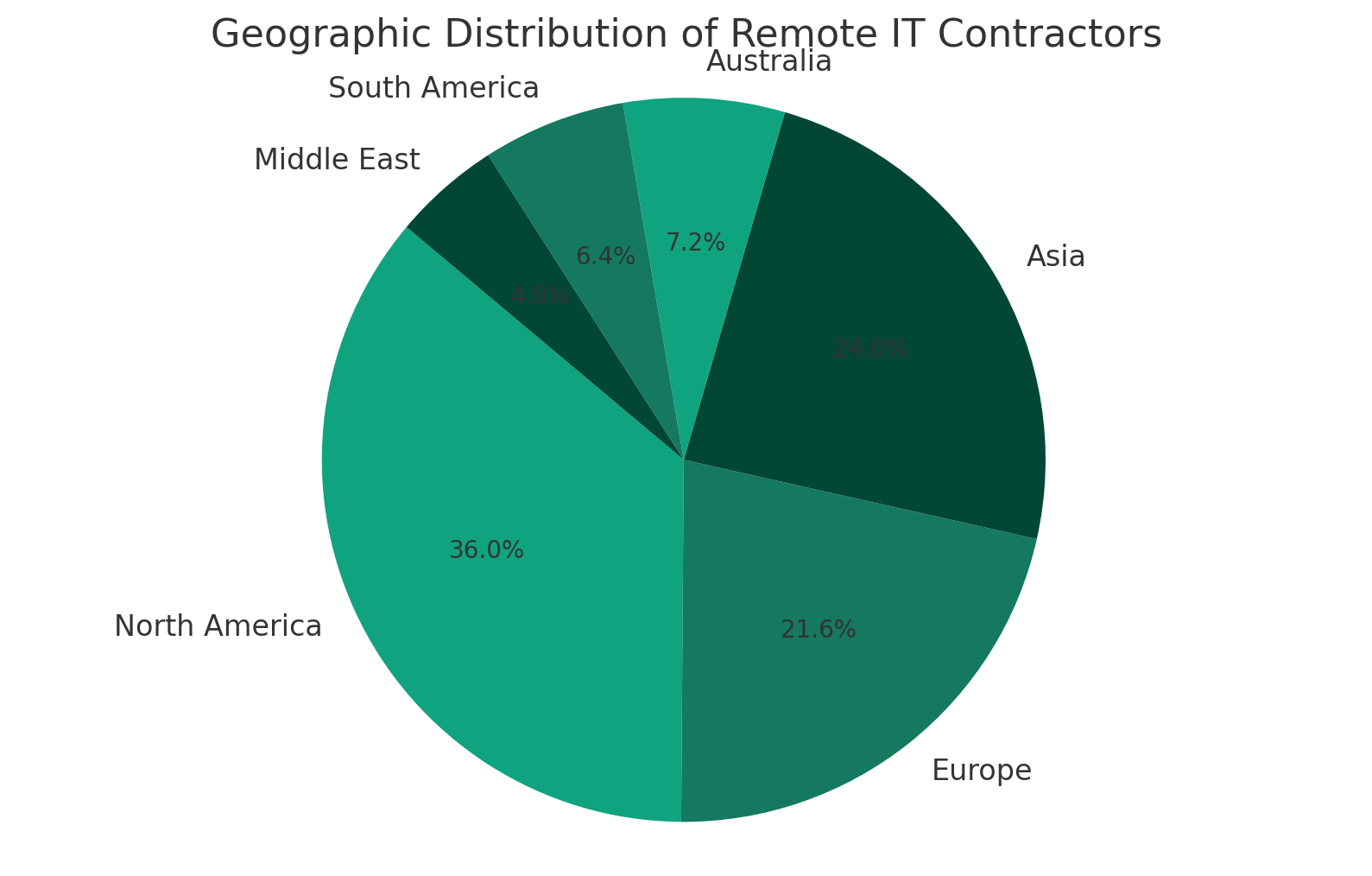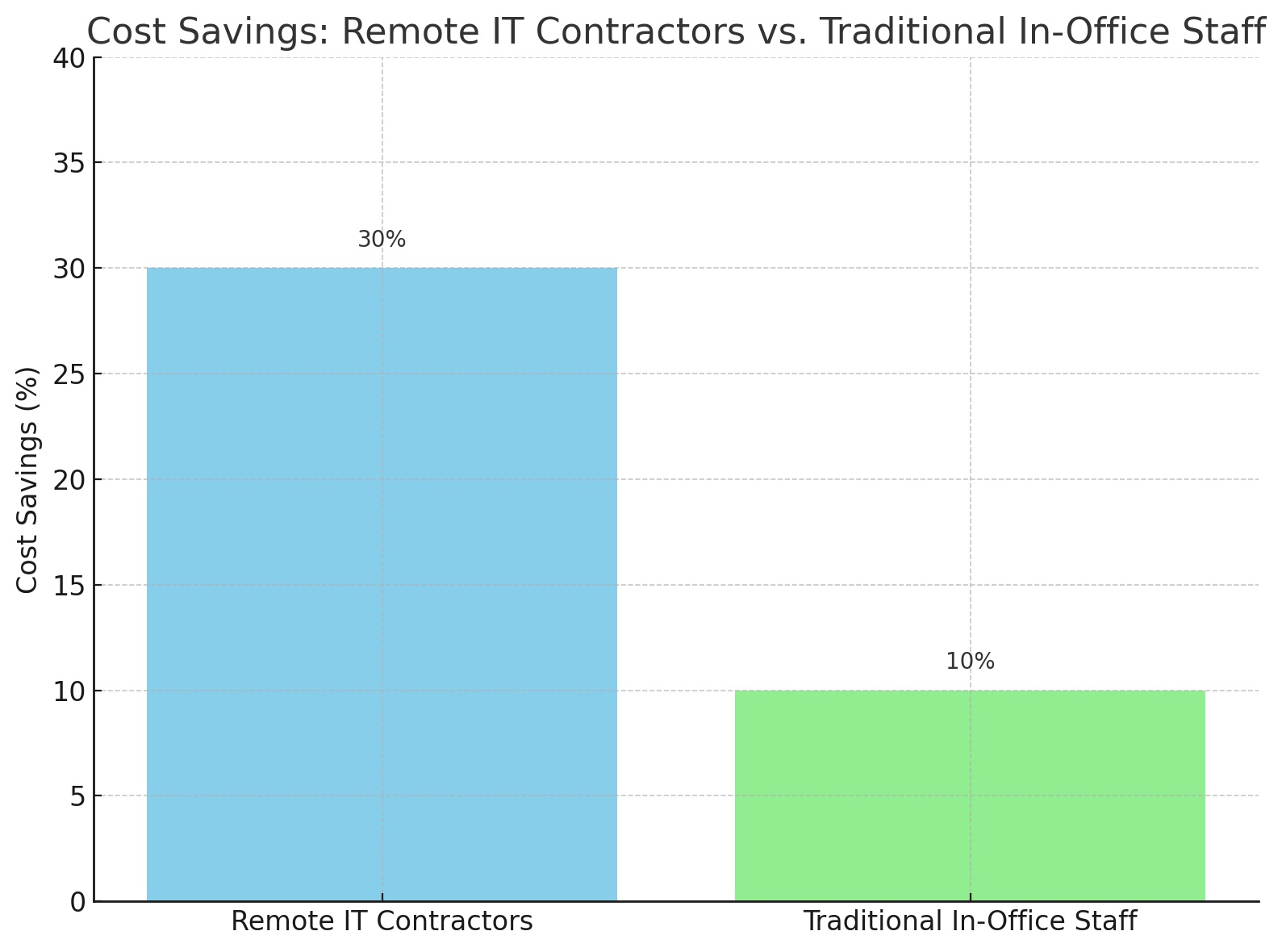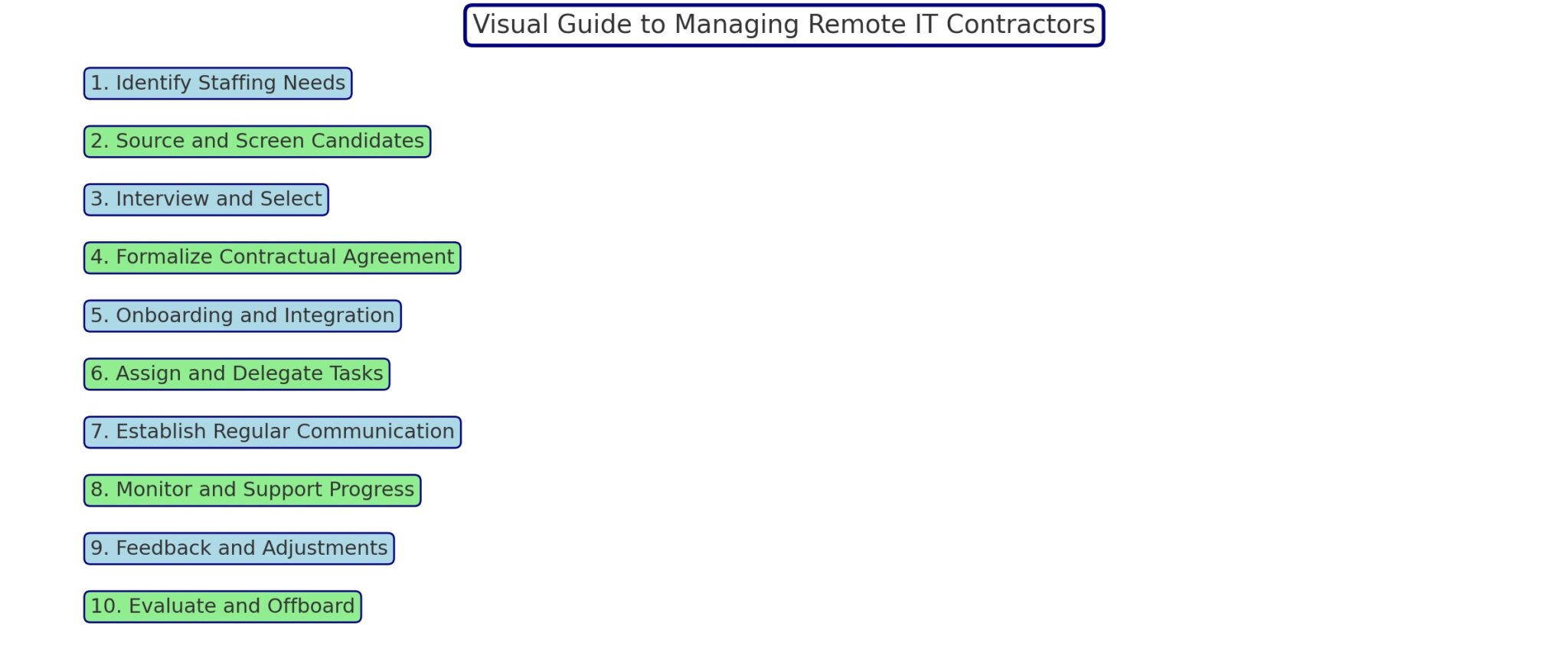Ensuring Success: Best Practices for Managing Remote IT Contractors
Discover key strategies for managing remote IT contractors effectively. From communication best practices to legal considerations, this comprehensive guide covers everything you need to ensure project success.
In today’s digital era, the landscape of work has undergone a significant transformation, particularly within the Information Technology (IT) sector. The surge in demand for flexibility, coupled with the advent of sophisticated collaboration tools, has propelled the rise of remote IT contractors as a vital component of the workforce. This paradigm shift offers unparalleled opportunities for businesses to tap into global talent pools, ensuring access to specialized skills and fostering innovation. However, managing remote IT contractors effectively presents its own set of challenges, from navigating communication hurdles to ensuring project alignment and safeguarding intellectual property.
The essence of successfully leveraging the prowess of remote IT contractors lies in the implementation of robust management practices. This article delves into the intricacies of managing remote IT contractors, outlining best practices, tools, and strategies to optimize productivity, ensure seamless collaboration, and ultimately, guarantee the success of IT projects. Whether you’re a seasoned manager or navigating the realm of remote work for the first time, this comprehensive guide offers valuable insights and actionable tips to enhance your management approach and harness the full potential of your remote IT workforce.
Understanding the Landscape of Remote IT Work
The Shift to Remote Work
The recent years have witnessed a seismic shift towards remote work, a trend significantly accelerated by global events such as the COVID-19 pandemic. In the IT sector, remote work has transitioned from a niche option to a mainstream working model. According to a report by Buffer’s “State of Remote Work,” a staggering 98% of IT professionals expressed a desire to work remotely, at least partially, for the remainder of their careers. This shift is not merely a temporary adaptation but a profound transformation in how IT services are delivered and how IT teams collaborate across the globe.

Benefits of Hiring Remote IT Contractors
Hiring remote IT contractors offers a multitude of benefits for organizations:
-
Access to Global Talent:
Remote work eliminates geographical barriers, enabling companies to hire the best IT professionals worldwide, irrespective of their location.
-
Flexibility and Scalability:
Remote contractors allow businesses to scale their IT workforce up or down based on project demands, providing operational flexibility.
-
Cost-effectiveness:
Engaging remote IT contractors can lead to significant cost savings, reducing expenses related to office space, equipment, and other overheads.
Challenges in Managing Remote IT Contractors
While the advantages are compelling, managing remote IT contractors also presents several challenges:
-
Communication Barriers:
Ensuring effective communication across different time zones and cultures can be daunting.
-
Maintaining Productivity and Quality:
Keeping remote contractors aligned with project goals and quality standards requires proactive management strategies.
-
Security Concerns:
Safeguarding sensitive data and intellectual property becomes more complex with a distributed workforce.
In the following sections, we’ll explore best practices and strategies to navigate these challenges, ensuring a productive, secure, and successful collaboration with remote IT contractors.
Best Practices for Managing Remote IT Contractors
Establishing Clear Communication Channels
Effective communication is the cornerstone of successful remote work arrangements. To manage remote IT contractors efficiently, it’s crucial to establish clear, open, and regular communication channels. Utilizing platforms like Slack, Microsoft Teams, or Zoom can facilitate seamless interactions, ensuring that all team members are on the same page, regardless of their physical location. It’s also beneficial to set regular check-in meetings, be it daily stand-ups or weekly project updates, to discuss progress, address concerns, and adjust priorities as needed.
Key tip:
Encourage the use of video calls for meetings when possible. This can help in building rapport and foster a sense of connection among team members.
Setting Expectations and Goals
From the onset of any project, it’s imperative to set clear expectations and goals for remote IT contractors. This includes detailed project briefs, deliverables, deadlines, and quality standards. Employing the SMART goals framework can ensure that objectives are Specific, Measurable, Achievable, Relevant, and Time-bound. Well-defined goals not only provide direction but also help in evaluating performance and progress effectively.
Actionable Strategy:
Utilize project management tools like Asana, Trello, or Jira to outline tasks, assign responsibilities, and track progress towards goals.
Onboarding and Integration
A structured onboarding process is essential in integrating remote IT contractors into your team and projects. This includes providing access to necessary tools, resources, and documentation, as well as introducing them to key team members and stakeholders. It’s equally important to communicate company culture, values, and expectations to align contractors with your organizational ethos.
Integration Tip:
Create a virtual onboarding kit that includes access credentials, project documentation, team contacts, and an overview of company culture and policies.
Leveraging Technology for Collaboration and Productivity
Technology plays a pivotal role in managing remote IT contractors effectively. Leveraging the right set of tools can significantly enhance collaboration, streamline workflows, and boost productivity. Key tools include:
-
Project Management Software:
Platforms like Asana, Trello, and Jira facilitate task assignment, progress tracking, and collaboration.
-
Communication Tools:
Tools such as Slack, Microsoft Teams, and Zoom are essential for daily communication and virtual meetings.
-
Document Sharing and Collaboration Platforms:
Google Drive, Dropbox, and Microsoft OneDrive enable real-time document sharing and collaboration.
Security Note:
When working with remote IT contractors, it’s crucial to implement robust security measures, including secure VPN access, multi-factor authentication, and regular security training.
Regular Check-ins and Feedback
Scheduling regular check-ins with remote IT contractors is key to maintaining project momentum and addressing any issues proactively. These sessions provide an opportunity to review progress, give and receive feedback, and make necessary adjustments to plans. Creating a feedback loop fosters a culture of continuous improvement and helps in building strong, collaborative relationships.
Feedback Strategy:
Implement a structured feedback process that includes both formal reviews and informal, constructive feedback during regular check-ins.
Nurturing a Positive Work Culture
Cultivating a positive work culture is crucial, even in a remote work setting. Encouraging open communication, acknowledging contributions, and facilitating virtual team-building activities can help in creating a supportive and inclusive environment. Recognizing and celebrating achievements, even in a virtual setting, can significantly boost morale and foster a sense of belonging among remote IT contractors.
Culture Tip:
Organize regular virtual social events, such as coffee chats, game sessions, or informal catch-ups, to strengthen team bonds and nurture a positive work culture.

Legal and Contractual Considerations
When engaging remote IT contractors, it’s important to navigate the legal and contractual landscape carefully to protect your organization and ensure compliance. This includes drafting clear contractual agreements that outline the scope of work, deliverables, timelines, payment terms, and confidentiality requirements. Additionally, understanding and adhering to labor laws and regulations in the contractor’s jurisdiction is essential to mitigate legal risks.
Understanding Legal Implications
-
Contractual Agreements:
Ensure that contracts with remote IT contractors are comprehensive and clearly define the terms of engagement.
-
NDAs (Non-Disclosure Agreements):
Implement NDAs to safeguard sensitive information and intellectual property.
Intellectual Property Rights
Protecting intellectual property (IP) is a critical consideration when working with remote IT contractors. Clearly define IP ownership in contractual agreements and implement secure data handling practices to prevent unauthorized access or leaks.
IP Protection Strategy:
Regularly review and update security protocols and ensure that remote contractors understand and comply with your organization’s data protection policies.
Managing remote IT contractors requires thoughtful strategies and the right set of tools to overcome challenges and harness the benefits of a global talent pool. By establishing clear communication, setting expectations, leveraging technology, and fostering a positive work culture, organizations can ensure the success of their remote IT projects. Furthermore, navigating legal and contractual considerations carefully is essential to protect your organization and maintain a healthy working relationship with remote contractors. Embracing these best practices will enable you to build a productive, secure, and successful remote IT workforce, ready to tackle the challenges of today’s dynamic business landscape.
Case Studies
Real-world examples can provide valuable insights into the successful management of remote IT contractors. Let’s delve into a couple of case studies that highlight best practices in action.
Successful Remote IT Contractor Management
Company:
A leading software development firm
Challenge:
The company needed to rapidly scale its development team to meet the demands of a new project, requiring specialized skills not available in-house.
Solution:
The firm engaged remote IT contractors from various global locations, carefully selecting individuals with the specific expertise required. They implemented a comprehensive onboarding process, established clear communication protocols using Slack and Zoom, and used Jira for project management. Regular virtual team-building activities were scheduled to integrate remote contractors with the in-house team.
Outcome:
The project was completed ahead of schedule, with high-quality deliverables. The successful integration of remote contractors led to an ongoing partnership, providing the company with flexible access to specialized skills.
Overcoming Challenges
Company:
An e-commerce startup
Challenge:
The startup faced difficulties managing a remote IT contractor team, with issues related to miscommunication, missed deadlines, and inconsistent work quality.
Solution:
The company revised its management approach, starting with a clear setting of expectations and detailed project briefs. They introduced a structured onboarding process, emphasizing company culture and project goals. A combination of Trello for task management and daily stand-ups via Zoom improved project oversight. Additionally, they implemented a bi-weekly feedback and review session to address issues proactively.
Outcome:
The adjustments led to significant improvements in project management efficiency, contractor productivity, and overall work quality. The startup developed a strong relationship with its remote IT contractors, fostering loyalty and consistent performance.
Tools and Resources
To further support the management of remote IT contractors, here are some recommended tools and resources that can enhance collaboration, communication, and project management.
Recommended Tools for Managing Remote IT Contractors
-
Project Management:
Asana, Trello, Jira
-
Communication:
Slack, Microsoft Teams, Zoom
-
Document Sharing and Collaboration:
Google Drive, Dropbox, Microsoft OneDrive
-
Time Tracking:
Toggl, Harvest, Time Doctor
Each tool offers unique features, such as task assignments, progress tracking, file sharing, and real-time communication, making it easier to manage remote teams effectively.

Further Reading and Resources
For those looking to deepen their understanding of remote workforce management, consider exploring the following resources:
-
Books:
“Remote: Office Not Required” by Jason Fried and David Heinemeier Hansson offers insights into remote work practices.
-
Online Courses:
Platforms like Coursera and LinkedIn Learning offer courses on remote team management and collaboration.
-
Professional Networks:
Joining forums and networks, such as GitHub for developers or Stack Overflow, can provide opportunities to share experiences and seek advice from peers.
Conclusion
In the evolving landscape of today’s global IT industry, managing remote IT contractors with efficacy is not just an option but a necessity for businesses aiming to remain competitive and innovative. The shift towards a more flexible, distributed workforce has opened doors to a wealth of opportunities, enabling access to a diverse pool of talents across the globe. However, this model also demands a strategic approach to overcome inherent challenges such as communication barriers, cultural differences, and the management of project timelines and deliverables.
Adopting best practices such as establishing robust communication channels, setting clear and measurable goals, leveraging cutting-edge technology for collaboration, and nurturing a positive and inclusive work culture is paramount. These strategies not only ensure the smooth execution of projects but also foster a sense of belonging and loyalty among remote contractors, enhancing productivity and job satisfaction.
Furthermore, the careful navigation of legal and contractual landscapes is crucial to safeguard organizational interests and maintain compliance with international laws and regulations. This includes drafting clear contracts, protecting intellectual property, and understanding the legal implications of remote work arrangements.
Ultimately, the success of managing remote IT contractors lies in recognizing and adapting to the nuances of remote work while maintaining a focus on clear communication, mutual respect, and the shared vision of project success. Businesses that embrace these practices, continually refine their remote work policies, and invest in building strong relationships with their remote IT workforce will thrive in this dynamic environment. Through continuous learning, adaptation, and leveraging the right tools and resources, managing remote IT contractors can transform from a challenge into a significant strategic advantage, driving innovation and growth in today’s digital world.
James Oliver
James is a seasoned recruitment expert at Sourcer with over 10 years of experience in IT talent acquisition. He specializes in remote workforce management and has helped numerous companies build successful distributed teams. James is passionate about sharing insights on modern recruitment practices and workforce optimization.


